Disclosure: This article contains affiliate links. We may earn a commission from purchases at no extra cost to you, which helps our travel content.
The morning mist still clung to the terraced hills as I made my way through Bandipur's cobblestone streets, the scent of cardamom chai mingling with woodsmoke in the crisp mountain air. This charming Newari trading post, perched at 1,030 meters on a saddle ridge, has managed what few Nepali towns have—preservation of its cultural soul despite the inevitable march of tourism. As an anthropologist who has spent decades documenting textile traditions across the Himalayas, I've watched Bandipur transform from a forgotten outpost to a living museum of Newari architecture and craftsmanship. Yet unlike Kathmandu's tourist-saturated markets, Bandipur's modest bazaar still functions primarily for locals, making it an unparalleled destination for couples seeking authentic connections with Nepal's material culture. Here, between 18th-century facades and beneath strung prayer flags, you'll discover artisans whose hands carry generations of knowledge—creating not mere souvenirs, but cultural artifacts that tell stories of this remarkable mountain kingdom.
Understanding Bandipur's Craft Heritage
Before you embark on your shopping expedition in Bandipur, it's essential to understand the historical context that shapes its material culture. Unlike the more accessible crafting hubs of Kathmandu Valley, Bandipur's relative isolation has preserved techniques that might otherwise have disappeared under the homogenizing influence of mass tourism.
As a former trading nexus between Tibet and British India, Bandipur became a cultural crossroads where Newari, Tibetan, and Indian aesthetic traditions converged. The town's prosperity in the 18th and 19th centuries allowed for patronage of skilled artisans, resulting in a distinctive local style that blends these diverse influences.
During my first research visit in 2007, I interviewed an elderly dhaka weaver who explained how the town's position on ancient trade routes influenced even the most minute details of their textile patterns. 'These diagonal lines,' she told me, pointing to her loom, 'represent the mountain paths traders would follow to reach our markets.' Such symbolic elements persist in contemporary works, though many visitors miss these deeper meanings without proper context.
The revival of Bandipur's traditional crafts coincided with the town's architectural restoration in the early 2000s. Local development committees made the prescient decision to ban vehicles from the bazaar area and restore the traditional brick and wood buildings—creating not just a picturesque setting but also workshops where artisans could return to their ancestral crafts.

💡 Pro Tips
- Visit the Bandipur Museum first to understand the historical context of local crafts
- Learn a few basic Nepali phrases to connect with artisans—'Yo ramro chha' (This is beautiful) goes a long way
- Morning hours (8-10am) offer the best lighting for examining detailed craftwork
Textile Treasures: Dhaka and Beyond
The heart of Bandipur's craft tradition lies in its textiles—particularly the intricate dhaka fabric that has become emblematic of Nepali identity. Unlike the mass-produced versions found in Kathmandu's tourist districts, Bandipur's dhaka weavers still work on traditional backstrap looms, creating geometric patterns that have remained largely unchanged for centuries.
On my most recent visit, I spent several afternoons with Kamala Shrestha, a master weaver whose family has practiced this art for seven generations. Working from a small workshop adjacent to her home near the eastern end of the bazaar, Kamala creates dhaka pieces that take up to three weeks to complete. The precision of her geometric patterns—diamonds, triangles, and zigzags in vibrant indigo, madder red, and saffron yellow—reflects a mathematical understanding passed through generations without written instruction.
'For a truly special souvenir, commission a custom dhaka scarf,' Kamala suggested when I asked what couples might seek. 'I can weave your names or a special date into the pattern—something that connects you to this place forever.' While such commissions require at least a week's lead time, simpler dhaka pieces are readily available.
Beyond dhaka, Bandipur's textile traditions include felted wool products from nearby hill communities and hemp textiles that demonstrate remarkable durability. For those interested in sustainable fashion, I recommend carrying a packable daypack for your purchases—it takes minimal space in your luggage but expands to hold your textile treasures without creasing them.
When examining textiles, always check for even tension in the weave and ask about natural dyes—the best artisans still use traditional colorants like indigo, turmeric, and madder root, which develop a beautiful patina over time that synthetic dyes cannot replicate.

💡 Pro Tips
- Bring USD in small denominations for better bargaining power (though haggling is less aggressive here than in Kathmandu)
- Ask permission before photographing artisans at work—and purchase something if you do
- Look for the telltale irregularities of hand-loomed textiles, which indicate authenticity
Woodcraft and Carved Treasures
The distinctive architectural elements of Bandipur—intricately carved windows, doors, and temple struts—testify to the town's rich woodworking tradition. While the grand architectural pieces are (rightfully) protected from export, smaller wooden crafts offer travelers portable expressions of this cultural heritage.
My favorite woodcraft shop in Bandipur belongs to Mohan Biswokarma, whose family has worked with wood for nine generations. His modest workshop on the western edge of the bazaar produces everything from practical kitchen implements to devotional objects. The distinctive aroma of Himalayan cedar and sandalwood greets you before you even step through his doorway.
'Wood speaks to those who listen,' Mohan told me during one of our conversations as he demonstrated the traditional hand-carving techniques his grandfather taught him. 'Each piece of wood has its own character—I just help reveal it.'
For couples seeking meaningful mementos, I recommend Mohan's carved wooden boxes—perfect for holding rings, special notes, or other small treasures from your travels together. His signature boxes feature sliding panels with geometric designs that echo those found in Bandipur's temple architecture.
When selecting wooden items, examine the joinery carefully—quality pieces use traditional mortise and tenon joints rather than glue or nails. Also note the finish; authentic pieces typically use natural oils rather than high-gloss synthetic varnishes.
To properly document your shopping experiences and the stories behind each piece you acquire, I suggest bringing a travel journal dedicated to recording the provenance and significance of your purchases. I've maintained such journals for decades, and they've become invaluable records of both material culture and personal connections formed during my research trips.
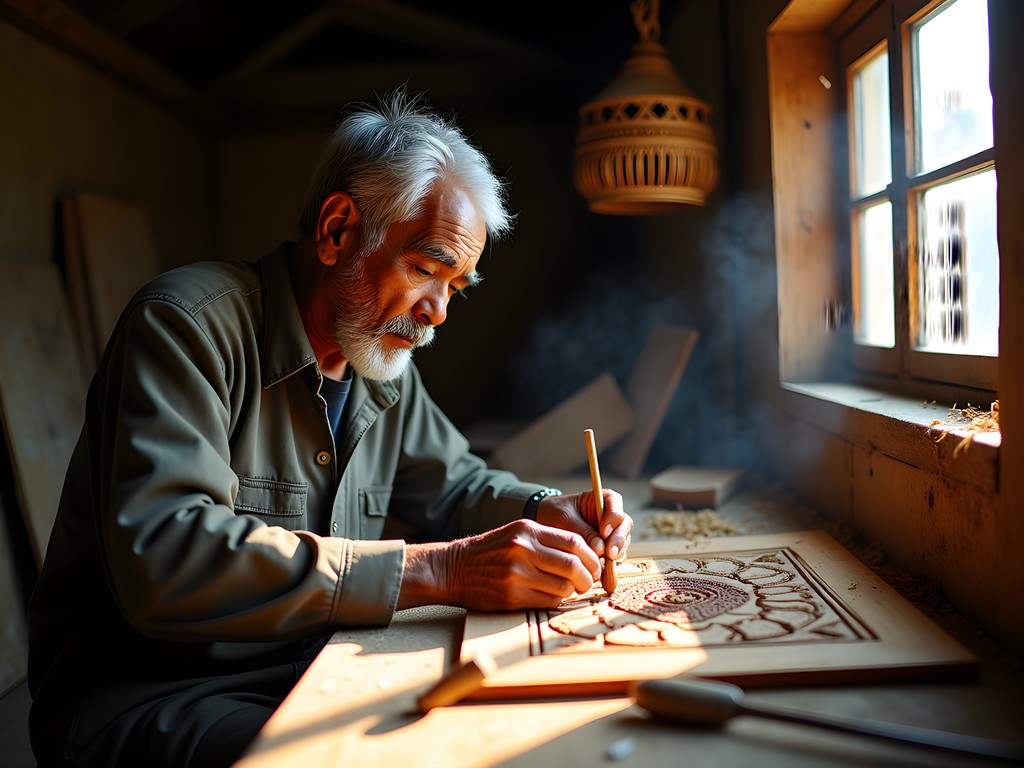
💡 Pro Tips
- Tap wooden items gently—well-seasoned wood produces a clear, resonant sound
- Ask about the specific wood species used—sustainable options include Himalayan cedar and fruit woods from managed forests
- Consider weight and climate differences when purchasing wooden items that will travel to different environments
Metal Crafts: From Practical to Spiritual
The metalworking traditions of Nepal's middle hills represent some of the most sophisticated craftsmanship in South Asia. In Bandipur, this tradition manifests primarily in brass, copper, and silver objects that serve both practical and spiritual functions.
The most distinctive metal crafts in Bandipur are the hand-hammered copper vessels and ritual objects produced by the Tamrakar caste. These artisans traditionally supplied the region's temples and monasteries with ritual implements, but now create both devotional items and practical pieces for the home.
During my fieldwork documenting material culture changes in Nepali hill communities, I spent several days with Ramesh Tamrakar, whose small workshop produces some of the finest copper and brass work I've seen outside Patan's famous metalworking district. The rhythmic sound of his hammering—a technique called repoussé—creates patterns of remarkable complexity on vessels ranging from water jugs to ceremonial offering bowls.
'Each piece begins as flat metal,' Ramesh explained as he demonstrated the transformation of a copper disk into a rounded butter lamp. 'The design emerges through thousands of small hammer strokes—there are no shortcuts.'
For couples seeking meaningful souvenirs, I recommend the small butter lamps (known as diyo) or water vessels (kalash) that play important roles in Hindu and Buddhist devotional practices. These pieces combine practical function with spiritual significance and typically feature motifs of lotus flowers, endless knots, and other auspicious symbols.
When selecting metalwork, look for even hammering patterns and test the resonance by tapping the piece gently—quality work produces a clear, sustained tone. Also examine joins carefully; traditional methods use minimal soldering, relying instead on precise fitting and small copper rivets.
To protect your metal treasures during travel, I recommend packing a padded organizer which provides excellent protection while keeping items separate and organized in your luggage.
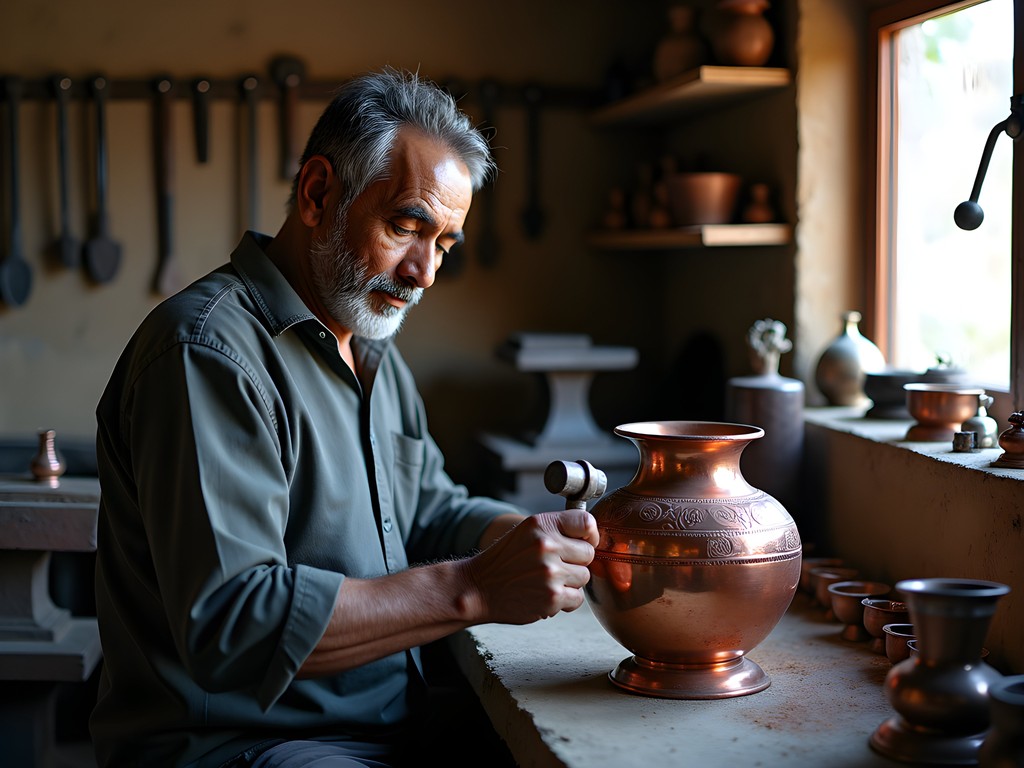
💡 Pro Tips
- Pure copper develops a natural patina over time—avoid pieces with artificial antiquing
- Religious items should be purchased with respectful intent—ask about proper care and handling
- Request simple packaging—excessive plastic wrapping often damages the metal's surface during transit
Thangka Paintings: Portable Sacred Art
While Bandipur isn't primarily known as a center for thangka painting—the intricate Buddhist scroll paintings traditionally created in Kathmandu Valley and Tibet—the town has attracted several skilled artists who produce works of remarkable quality. These paintings, depicting Buddhist deities, mandalas, and cosmological diagrams, represent both spiritual objects and exquisite artistic achievements.
During my research on changing religious material culture in Nepal, I was fortunate to study with Tenzin Norbu, a thangka artist who trained in the Kathmandu Valley but relocated to Bandipur seeking the quieter environment that his meticulous work demands. His small studio near the town's eastern entrance produces only a few paintings each year, each requiring months of painstaking work using traditional mineral pigments on cotton canvas.
'A proper thangka is not decoration—it is a support for meditation and spiritual practice,' Tenzin explained as he demonstrated the grid system used to ensure proper proportions of deities. 'Every element—the posture, hand gestures, colors—has precise meaning defined by religious texts.'
For travelers interested in these sacred paintings, understanding the basics of iconography enhances appreciation. The most accessible subjects for newcomers include Green Tara (representing compassion in action) and Medicine Buddha (associated with healing). These deities are depicted according to strict iconographic rules while allowing individual artistic expression in background elements and decorative details.
Authentic thangkas use natural mineral pigments rather than synthetic colors—look for the subtle variations and luminosity that natural pigments provide. Quality work also features fine detail work in gold, traditionally applied using 24k gold dust mixed with a binding agent.
When purchasing a thangka, request proper mounting with silk brocade borders that protect the painting and prepare it for display. For transporting these delicate works, I recommend a art portfolio case which provides flat, protected storage that prevents creasing or damage to the painted surface.

💡 Pro Tips
- Ask about the pigments used—natural mineral pigments (from stones like lapis lazuli and malachite) indicate higher quality
- Examine the precision of fine details, particularly facial features and gold work
- Request a blessing ceremony if purchasing a deity image—many artists can perform a simple consecration
Ethical Shopping: Supporting Sustainable Craft Traditions
As an anthropologist who has witnessed both the preservation and disappearance of craft traditions across the Himalayas, I approach shopping in Bandipur with a commitment to ethical consumption that supports sustainable cultural practices. The choices we make as visitors have profound impacts on the economic viability of traditional crafts and the communities that produce them.
Bandipur's relative isolation has been both a challenge and blessing for its artisans. While they lack the volume of customers found in Kathmandu or Pokhara, they've also been somewhat protected from the market pressures that often lead to cutting corners or mass production. This has preserved authentic techniques but created economic vulnerabilities that ethical shopping can help address.
One organization making a significant difference is the Bandipur Social Enterprise Collective, which provides microloans and business training to local artisans while helping them reach wider markets. Their small showroom near the town square features work from artisans who might otherwise lack visibility, with transparent pricing that ensures fair compensation.
'We're not interested in growth for growth's sake,' explained Sunita Gurung, the collective's coordinator. 'Our goal is sustainable livelihoods that allow these craft traditions to continue for another generation.'
When shopping ethically in Bandipur, consider these principles:
- Value quality over quantity – Invest in fewer, finer pieces rather than accumulating trinkets
- Seek direct purchases – Buy directly from artisans when possible
- Ask questions – Understanding production methods helps you make informed choices
- Respect fair pricing – Aggressive bargaining undermines sustainable business models
- Consider environmental impact – Favor natural materials and traditional processes
For documenting the stories and provenance of your purchases, I've found a travel camera invaluable—its compact size and excellent image quality allow me to capture detailed photos of artisans and their work without being intrusive. These images become important documentation of both your travel memories and the continuing evolution of living traditions.

💡 Pro Tips
- Request minimal packaging to reduce waste—many shops default to excessive plastic wrapping
- Ask if the shop offers shipping services for larger purchases—some can arrange reliable delivery to your home country
- Consider commissioning items if you have time—this provides guaranteed income for artisans
Final Thoughts
As the sun sets behind Bandipur's terraced hillsides, casting long shadows across the bazaar's worn cobblestones, I find myself reflecting on the delicate balance this remarkable town maintains. Unlike so many destinations where traditional crafts have devolved into mass-produced simulacra, Bandipur's artisans continue creating with integrity and purpose. The treasures you'll discover here—whether a meticulously woven dhaka scarf, a hand-hammered copper vessel, or an intricate wooden carving—carry within them stories that extend far beyond their material value. They represent living traditions, economic lifelines, and cultural continuity in a rapidly changing world. By approaching your shopping as an opportunity for cultural exchange rather than mere acquisition, you and your partner will return home not just with beautiful objects, but with meaningful connections to the hands and hearts that created them. Bandipur's markets offer more than souvenirs; they offer tangible links to centuries of Himalayan heritage—heritage that your thoughtful patronage helps preserve for generations to come.
✨ Key Takeaways
- Bandipur offers authentic craft traditions largely unchanged by mass tourism
- Direct purchases from artisans provide both economic support and deeper cultural understanding
- The town's craft traditions reflect its unique position as a historical trading crossroads
- Quality craftsmanship in Bandipur emphasizes traditional techniques and natural materials
- Ethical shopping choices help preserve endangered cultural knowledge and practices
📋 Practical Information
Best Time to Visit
October-November and March-April offer clear skies and comfortable temperatures
Budget Estimate
$50-100 per day for accommodations, meals and shopping
Recommended Duration
2-3 days
Difficulty Level
Easy




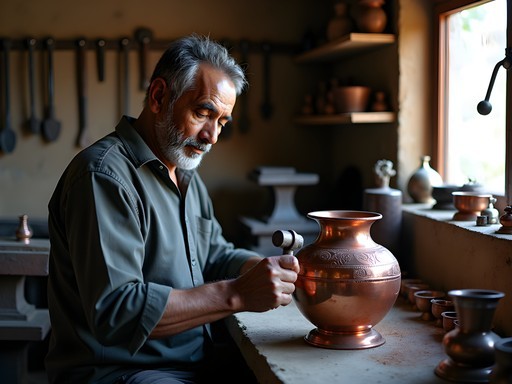
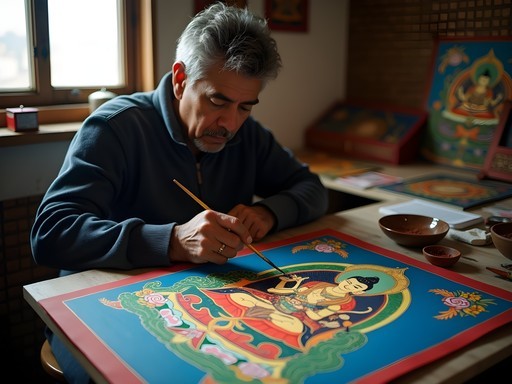
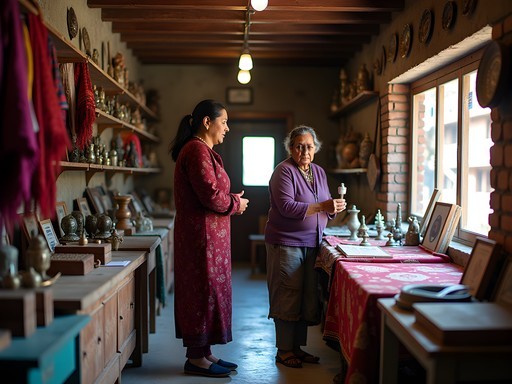









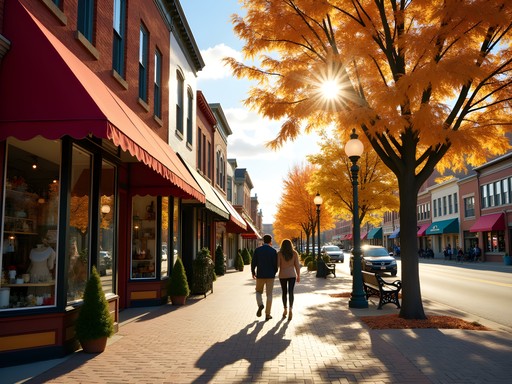
Comments
Savannah Walker
Samantha, your post captures the soul of Bandipur's craft scene perfectly! When I visited last spring, I discovered a tiny workshop down a narrow alley near the eastern end of the bazaar where an elderly gentleman was making traditional Khukuri knives. He showed me the entire process from forging to handle-carving. For anyone heading there, I'd recommend bringing a good daypack with padding - I bought so many delicate items and was terrified they'd break on the bumpy bus ride back to Kathmandu! My packing cubes were lifesavers for organizing all my fragile treasures. The metal crafts section of your post made me smile - those singing bowls are incredibly therapeutic. I still use mine during my morning meditation.
sunnymood
Did you have any issues with customs bringing the knife back? I've always wondered about that.
Savannah Walker
Good question! I made sure to pack it securely in my checked luggage and declared it. No issues, but definitely wouldn't try carrying it in a carry-on!
freeadventurer
I'm heading to Nepal for the first time next month!!! This post got me so excited about shopping in Bandipur! Are the prices reasonable? And do they take credit cards or should I bring cash?
roambuddy
Bring cash! Most of the small shops don't take cards. The ATM in town was out of service when I was there.
freeadventurer
Thanks for the tip! Will definitely bring extra cash then.
summerexplorer5571
Just added this to my Nepal itinerary! Thanks for the detailed guide.
Haley Hamilton
Bandipur was such a delightful surprise on my Nepal trip last year! I spent three days there when I only planned for one. The textile market was my downfall - ended up shipping a box home because my backpack couldn't fit all my purchases! The Dhaka fabric shop run by that older woman and her daughter had the most incredible selection. They showed me how they weave the patterns by hand - such patience and skill. If you go, don't miss the little tea shop next door where all the weavers gather in the afternoon. The stories they share (if you have a translator) about how designs have evolved over generations are fascinating.
sunnymood
Beautiful photos! Those metal singing bowls look amazing.
globeperson
OMG those photos of the textiles are STUNNING! 😍 The colors are incredible!
roambuddy
Great post! I'm heading to Nepal in October and definitely want to visit Bandipur now. How difficult is it to tell authentic handmade crafts from factory-made tourist stuff? Any specific shops you'd recommend for the metal singing bowls?
Haley Hamilton
Not Samantha, but I can help with the singing bowl question! Look for the small workshop just off the main square - the craftsman lets you try different bowls to find one with the perfect tone. The machine-made ones don't have the same resonance. I use my travel journal to keep notes on which shops sell authentic crafts in each town I visit.
summerpro
Your post brought back so many memories! I visited Bandipur last year and completely fell in love with the textile work. That Dhaka fabric is something else - I bought a small wall hanging that's now the centerpiece in my living room. Did you find the shopkeepers open to bargaining? I felt awkward trying but was told it was expected. Also, that morning mist you described is magical - I used to wake up early just to watch it roll through the hills while sipping chai from my guesthouse balcony.
Samantha Hughes
Thanks for your comment! Yes, bargaining is definitely expected, but I always try to be respectful about it. I found that showing genuine interest in their craft often led to better connections (and prices) than aggressive haggling. Those misty mornings were absolutely the highlight of my stay!
summerpro
That's a good approach! I'm still kicking myself for not buying one of those hand-carved wooden masks. Next time for sure!
Nicole Russell
Samantha, your descriptions transported me right back to Bandipur! I was there last year and completely fell in love with the woodcarvings. That little shop near the end of the bazaar with the old craftsman who's been carving for 50+ years? His work is extraordinary! I bought a small Garuda figure that's now my favorite souvenir from Nepal. Did you notice how he uses different woods for different pieces? The walnut ones have this incredible depth to them.
summerexplorer5571
Is bargaining expected at these craft shops? Never sure about the etiquette.
Nicole Russell
Yes, but gentle bargaining! These artisans deserve fair pay. I usually offer about 20% less than the asking price and meet somewhere in the middle. The woodcarver I mentioned actually has fixed prices though - and they're worth every rupee!
exploreclimber
Those Dhaka textiles look incredible! Definitely adding this to my Nepal itinerary.
Venture X
Premium card with 2X miles, $300 travel credit, Priority Pass